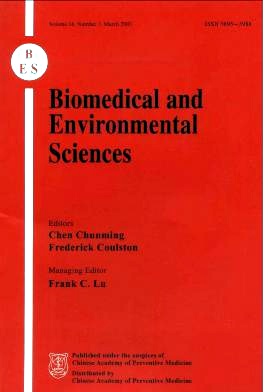3,4-Methylenedioxymethamphetamine (MDMA) Abuse Markedly Inhibits Acetylcholinesterase Activity and Induces Severe Oxidative Damage and Liperoxidative Damage
-
Key words:
- 3,4-Methylenedioxymethamphetamine /
- MDMA /
- Drug abuse /
- Acetylcholinesterase /
- Free radicals /
- Lipoperoxide /
- Antioxidase /
- Oxidative stress /
- Oxidative damage /
- Lipoperoxidative damage
Abstract: Objective To investigate whether 3,4-methylenedioxymethamphetamine (MDMA) abuse produces another neurotoxicity which may significantly inhibit the acetylcholinesterase activity and result in severe oxidative damage and liperoxidative damage to MDMA abusers. Methods 120 MDMA abusers (MA) and 120 healthy volunteers (HV) were enrolled in an independent sample control design, in which the levels of lipoperoxide (LPO) in plasma and erythrocytes as well as the activities of superoxide dismutase (SOD), catalase (CAT), glutathione peroxidase (GPX) and acetylcholinesterase (AChE) in erythrocytes were determined by spectrophotometric methods. Results Compared with the average values of biochemical parameters in the HV group, those of LPO in plasma and erythrocytes in the MA group were significantly increased (P<0.0001), while those of SOD, CAT, GPX and AChE in erythrocytes in the MA group were significantly decreased (P<0.0001). The Pearson product-moment correlation analysis between the values of AChE and biochemical parameters in 120 MDMA abusers showed that significant linear negative correlation was present between the activity of AChE and the levels of LPO in plasma and erythrocytes (P<0.0005-0.0001), while significant linear positive correlation was observed between the activity of AchE and the activities of SOD, CAT and GPX (P<0.0001). The reliability analysis for the above biochemical parameters reflecting oxidative and lipoperoxidative damages in MDMA abusers suggested that the reliability coefficient (alpha) was 0.8124, and that the standardized item alpha was 0.9453. Conclusion The findings in the present study suggest that MDMA abuse can induce another neurotoxicity that significantly inhibits acetylcholinesterase activity and aggravates a series of free radical chain reactions and oxidative stress in the bodies of MDMA abusers, thereby resulting in severe neural, oxidative and lipoperoxidative damages in MDMA abusers.
| Citation: | JUN-FU ZHOU, YE-HUA ZHOU, Liang Zhang, Huai-Hong Chen, DONG CAI. 3,4-Methylenedioxymethamphetamine (MDMA) Abuse Markedly Inhibits Acetylcholinesterase Activity and Induces Severe Oxidative Damage and Liperoxidative Damage[J]. Biomedical and Environmental Sciences, 2003, 16(1): 53-61. |







 Quick Links
Quick Links
 DownLoad:
DownLoad: